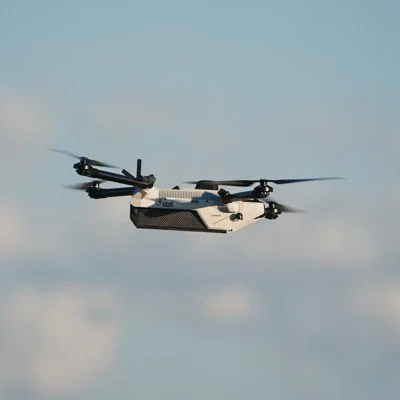Goodbye Aircraft Carriers, Hello Drones
Disclaimer: This is an opinion/analysis piece
At the end of the 18th century, battleships came into the military pictures. At the time it was revolutionary, but over 100 years later they may not be the best way for preparing for the next 100 years.
When the Ukraine war started in February 2022 drones were just beginning to be introduced into the battlefield in their newest form. However tanks and armored vehicles alongside more conventional weapons still dominated the battlefield. Over three years on from the start of the war the tides have begun to shift. Drones now account for roughly 70 percent of all confirmed Russian deaths according to the Royal United Services Institute.
Bolt-M Drone Anduril
The main types of drones that have been involved in the conflict include FPV(First person view) kamikaze drones and FPV reconnaissance drones. The use of these high tech drones have been a critical reason as to why it has become much more difficult to move men around the battlefield. Soldiers on both sides never know what might be lurking above them.
The advantage that Ukraine has had is many of the drones they have been using have been exceptionally cheap to procure and produce. According to releases by the Ukraine Defense Industry, many of the FPV drones being used come as cheap as 300 dollars. That is a bargain compared to western drones, where the most expensive one, the MQ-25 Stingray costs a staggering 201 million dollars. The U.S. equivalent of Ukraine FPV drones, which often cost less than 500 dollars, is a Bolt-M which costs in the low tens of thousands of dollars, significantly more than Ukraine's. The next drone which is relatively similar to the ones used in Ukraine, the Rogue 1 costs 94,000 dollars. The U.S. needs to significantly bring down the price of the drones it is buying, and fast.
For a long time now companies like Huntington Ingalls Industries have been responsible for building the most advanced aircraft carriers for the U.S. The most recent one which was delivered by Huntington Inglass Industries was the USS Gerald R. Ford which cost around 13 Billion dollars, not very cheap. The U.S. currently has 11 aircraft carriers in service and are expecting another next year. When comparing the likes of aircraft carriers to drones there is a huge difference in the cost. As we move into the future new technology will allow for new, ultra advanced missiles to be produced such as hypersonic ones. Currently air defenses are incapable of shooting down hypersonic ones. Essentially a 13 billion dollar aircraft carrier is a sitting duck when it comes up against new drones and hypersonic missiles. It is now that the U.S. must move with the future and start putting its vast military budget towards preparing for the future of warfare. That is where companies like Anduril and Palantir come into play.
Founded by Palmer Lucky in 2017, Anduril is the company that can help prepare the U.S. for the wars of the future. Anduril specializes in producing high tech futuristic military hardware such as drones and underwater vehicles. Anduril is constantly trying to find new ways to build its hardware in mass while also keeping the costs as low as possible. This is exactly what the U.S. military needs. If it wants to be prepared for the future it needs to start investing much more in drones and unmanned vehicles because these are way cheaper and can easily take out floating cities such as aircraft carriers. It should be noted that since 2023 the Pentagon has been trying to find ways through research to reduce the cost of drones through an initiative called Replicator. The problem that the Pentagon keeps running into and will continue to unless the culture changes is that expensive is always better. However if the war in Ukraine has shown anything it is that expensive is not always better, and often not more effective.
As the years continue to go by, technology will continue to improve alongside Artificial Intelligence. Drones will become more advanced and will be greatly aided by AI. It is crucial that at this critical juncture the U.S. realizes it must move with the future and not stay with the past…Goodbye aircraft carriers.

